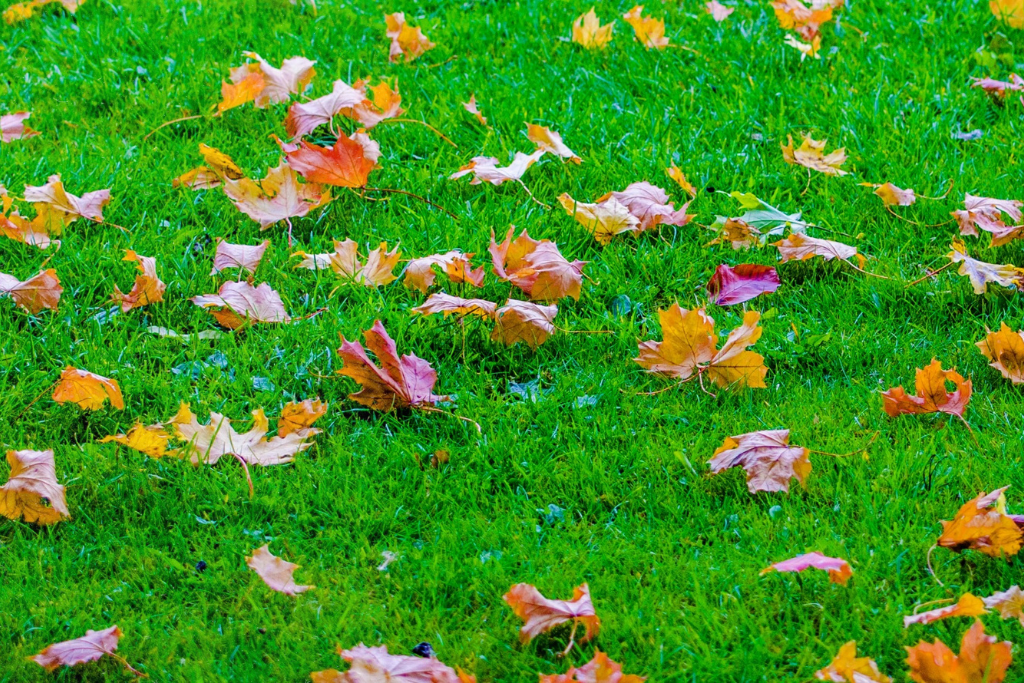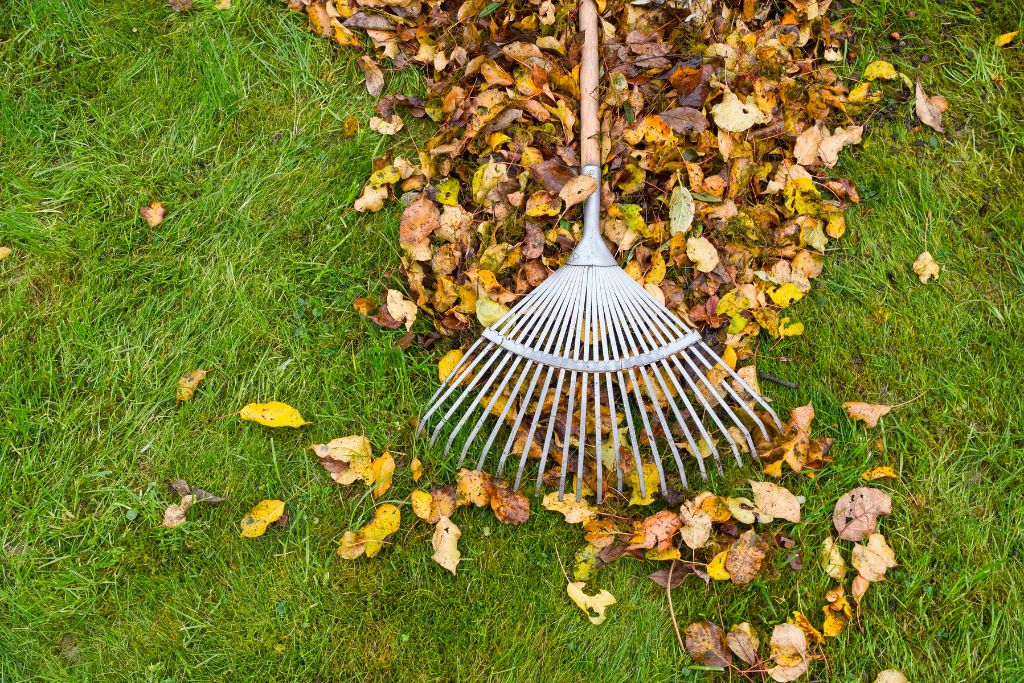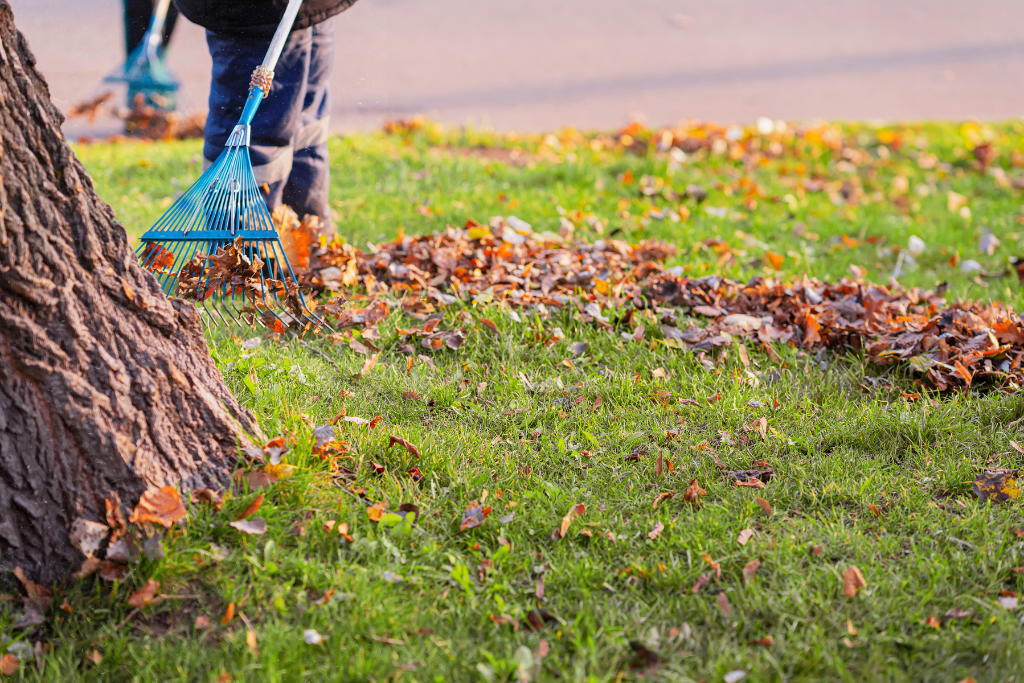
Ever wondered why clearing leaves off your lawn is such a big deal? Sure, those colorful piles might look nice in the fall, but if you leave them there too long, they can cause some serious problems. From messing with your grass to attracting pests, ignoring leaf removal can really hurt your yard. Plus, a clean lawn just looks better, right? Let’s break down why leaf removal is important and how it helps keep your lawn healthy and looking great.
Key Takeaways
- Leaves left on your lawn can block sunlight and trap moisture, causing damage.
- Removing leaves can prevent mold, pests, and other lawn problems.
- A clean lawn improves your home’s curb appeal and overall appearance.
- Composting or mulching leaves is an eco-friendly way to manage them.
- Using the right tools makes leaf removal quicker and easier.
The Impact of Fallen Leaves on Lawn Health
How Leaves Block Sunlight and Airflow
When leaves pile up on your lawn, they create a dense layer that blocks sunlight and airflow. Grass relies on sunlight for photosynthesis and needs proper air circulation to “breathe.” Without these, the grass weakens and becomes more prone to disease. A thick layer of leaves can suffocate your lawn, leading to long-term damage. Our services ensure your lawn stays healthy and thriving! If left unchecked, this can result in patchy, unhealthy grass that struggles to recover.
The Risk of Mold and Fungal Growth
Fallen leaves trap moisture, especially after rain or morning dew. This damp environment is a breeding ground for mold and fungal growth, which can spread quickly across your lawn. Common issues include unsightly patches of mold or even diseases that harm the grass. Moisture-loving fungi thrive under leaf piles, and removing leaves promptly can help avoid these problems.
Effects on Grass Growth and Soil Quality
A lawn covered in leaves isn’t just unsightly—it also disrupts the soil’s health. When leaves sit too long, they can compact the soil, making it harder for water, nutrients, and oxygen to reach the grass roots. This stunts grass growth and can lead to poor soil quality over time. Regular leaf removal ensures your lawn gets what it needs to stay lush and vibrant.
Ignoring fallen leaves might seem harmless, but the long-term effects on your lawn can be costly and time-consuming to fix. A little effort now can save you a lot of trouble later.
- Fallen leaves block sunlight, starving grass of energy for growth.
- Moisture trapped under leaves creates an ideal environment for mold.
- Compacted soil from leaf buildup prevents essential nutrients from reaching roots.
How Leaf Removal Enhances Lawn Aesthetics
Creating a Clean and Tidy Appearance
When leaves pile up on your lawn, it can quickly look messy and unkempt. By clearing them away, you instantly restore order and make your yard look well-maintained. A clean lawn creates a welcoming vibe—both for you and anyone visiting your home. Plus, staying on top of leaf removal makes it easier to manage the workload over time.
Preventing Discoloration and Dead Spots
Piles of leaves left to sit can smother the grass underneath, cutting off sunlight and airflow. Over time, this can lead to unsightly yellow or brown patches. Removing leaves regularly helps keep your grass healthy and vibrant. Think of it as giving your lawn room to breathe. Healthy grass means fewer headaches come spring.
Improving Curb Appeal for Your Property
A neat lawn isn’t just about personal satisfaction—it can also boost how others perceive your home. Whether you’re entertaining guests or thinking about selling, a tidy yard with no leaf clutter can make a big difference. It’s one of those small details that adds up to a polished, cared-for look.
Keeping your lawn leaf-free isn’t just a chore—it’s an easy way to show pride in your property and maintain its charm year-round.
For more on why leaf removal matters, check out regularly removing fallen leaves to understand its impact on lawn health and appearance.
The Role of Leaf Removal in Pest Control

How Leaves Attract Unwanted Insects
When leaves pile up on your lawn, they create a damp, sheltered environment that bugs absolutely love. Ants, beetles, and even termites often find these layers of debris irresistible. By removing leaves regularly, you disrupt these habitats and discourage pests from settling in. This simple act can save you from dealing with infestations that might otherwise spread to your home.
Reducing Habitats for Rodents and Other Pests
Rodents like mice and rats are also drawn to leaf piles because they provide warmth and protection. These critters often use the leaves as nesting material, which can quickly turn into a bigger problem if they start venturing closer to your house. Keeping your yard clear of fallen leaves ensures that your property is less inviting to these unwanted guests.
Preventing Infestations in Your Yard
Let’s face it—if pests find a cozy spot in your yard, it’s only a matter of time before they start causing trouble. Over time, unchecked leaf piles can lead to infestations that are not only annoying but also expensive to deal with. Regular leaf removal acts as a preventive measure, keeping your yard and home safer from these issues.
A clean yard isn’t just about looks—it helps keep pests away and makes your space more enjoyable. Contact us for expert lawn irrigation services!
If you’re looking for professional help, reliable leaf removal services in Oakton, VA can make a big difference in maintaining both the health and appearance of your yard.
Seasonal Benefits of Regular Leaf Removal
Preparing Your Lawn for Winter Dormancy
When winter rolls around, your lawn needs to breathe and settle in for its dormant phase. Fallen leaves left to pile up can suffocate the grass, trapping moisture and creating a soggy mess. Clearing these leaves ensures your lawn gets the air it needs to prepare for the colder months. Plus, it reduces the risk of snow mold, which can wreak havoc once the snow melts. Think of it as tucking your lawn in under a clean, fresh blanket instead of a damp, moldy one.
Encouraging Healthy Spring Growth
Spring is when your yard wakes up, and you want it to start strong. By removing leaves consistently in the fall, you’re clearing the way for sunlight and nutrients to reach the soil. This sets the stage for vibrant, lush growth when the weather warms up. A properly prepped lawn also means you’ll spend less time dealing with dead patches or reseeding come spring. It’s like giving your grass a head start in the growing season.
Maintaining Year-Round Lawn Vitality
Regular leaf removal isn’t just about one season—it’s about keeping your lawn in good shape all year. A lawn free of heavy leaf piles stays healthier because it avoids issues like compacted soil and pest infestations. Consistent care also means you’re less likely to rely on chemical fertilizers or other quick fixes to bring your yard back to life. Regular year-round lawn maintenance not only keeps your grass thriving but also supports a more sustainable and eco-friendly yard.
A little effort in leaf removal during fall can keep your lawn healthy and looking great year-round. Call us now for professional yard clean-up services!
Eco-Friendly Ways to Manage Fallen Leaves

Composting Leaves for Garden Use
Turning fallen leaves into compost is one of the most sustainable ways to handle them. By letting leaves naturally decompose, you create nutrient-rich compost that can be used to enrich your garden soil. To start, gather leaves into a pile, mix in some green materials like grass clippings, and keep it slightly moist. Over time, microorganisms will break everything down into a dark, crumbly material perfect for plants. For a faster process, shred the leaves first with a lawn mower or leaf shredder.
Composting not only reduces waste but also saves you money on store-bought fertilizers. Contact us to learn more about sustainable lawn care!
Using Leaves as Mulch for Plants
Another smart use for fallen leaves is turning them into mulch. Lay shredded leaves around the base of trees, shrubs, or flower beds to help retain soil moisture and regulate temperature. Mulching also prevents weeds from sprouting, cutting down on garden maintenance. Just make sure the leaf layer isn’t too thick, as this can block airflow and trap excess moisture, potentially harming your plants.
Recycling Leaves Through Municipal Programs
If composting or mulching isn’t an option, check if your local municipality offers leaf recycling programs. Many areas provide curbside pickup or designated drop-off sites where leaves are collected and processed into mulch or compost. This is an easy way to ensure your leaves are disposed of responsibly without adding to landfills. Look into whether your city has specific guidelines, such as requiring leaves to be bagged in biodegradable sacks.
- Shred leaves to reduce their volume before disposal.
- Avoid mixing leaves with other yard waste unless instructed.
- Participate in seasonal leaf collection drives to simplify the process.
For those looking to make the most of fallen leaves, transforming them into nutrient-rich compost or mulch is an excellent choice. These methods not only benefit your lawn and garden but also contribute to a healthier environment.
Tools and Techniques for Effective Leaf Removal
Choosing the Right Rake or Blower
Picking the right tool for the job makes everything easier. For smaller yards or tight spaces, a wide rake can help you gather leaves quickly without too much effort. On the other hand, leaf blowers are fantastic for covering larger areas in less time. If you’re serious about yard maintenance, consider a mulching lawn mower—it can chop up leaves while you mow, making cleanup way simpler. For more details, check out effective methods for cleaning up leaves in your yard.
Efficient Bagging and Disposal Methods
Once you’ve gathered all the leaves, the next step is dealing with them. Use biodegradable bags for easy disposal, especially if your local waste service picks them up. Some people prefer to compost their leaves, which is a great way to recycle them into nutrient-rich soil. If you’re not composting, make sure to compact the leaves in the bag to save space.
If you need professional assistance with leaf removal or composting solutions, call us! Let us help you turn those leaves into a valuable resource for your landscape.
Tips for Minimizing Labor and Time
Nobody wants to spend their entire weekend raking. Try these tips to save time:
- Work on a dry day—wet leaves are heavier and harder to move.
- Use a tarp to drag large piles of leaves across your yard.
- Divide your yard into sections and tackle one area at a time.
A little planning goes a long way. Breaking the job into smaller tasks can make it feel less overwhelming.
Common Mistakes to Avoid During Leaf Removal
Over-Raking and Damaging Grass
It’s easy to get carried away with raking, but overdoing it can really hurt your lawn. When you rake too aggressively, you risk tearing up the grass and even uprooting some of it. This can leave bare patches on your lawn, which are not only unsightly but also more prone to weeds. Use a light touch when raking to avoid damaging the grass underneath. If you’re using a leaf blower, adjust it to a lower setting to prevent disturbing the soil.
Ignoring Hard-to-Reach Areas
Those corners behind bushes or under trees might seem like too much effort, but skipping them can lead to bigger problems. Fallen leaves in these spots can trap moisture, creating a perfect environment for mold and pests. Make it a point to check these areas regularly. A small handheld rake or a leaf grabber can make this job easier. Neglecting these spaces can undo all your hard work elsewhere.
Delaying Removal Until It’s Too Late
Waiting too long to remove leaves can cause serious issues for your lawn. Wet, compacted leaves can suffocate grass, block sunlight, and even lead to fungal growth. Instead of doing it all in one go, try tackling leaf removal in smaller, more frequent sessions. This way, you avoid overwhelming yourself and keep your lawn healthier in the process.
Procrastination in leaf removal can lead to long-term damage to your lawn, making recovery both time-consuming and costly.
By avoiding these common mistakes, you’ll not only save time but also keep your lawn looking its best. For those wondering about alternatives, consider mulching leaves as a way to improve soil quality while reducing waste.
Wrapping It Up
Taking care of the leaves on your lawn might seem like a small thing, but it really makes a difference. When you keep your yard clear of leaves, you’re not just making it look nicer—you’re also helping your grass stay healthy. Piles of leaves can block sunlight and trap moisture, which isn’t great for your lawn. Plus, cleaning up leaves regularly can save you from bigger headaches later, like dealing with dead patches or pests. So, grab a rake or a blower, and give your lawn the care it deserves. It’s a little effort now for a yard you can enjoy all year.
Our years of experience in lawn care make us the preferred choice for both households and businesses. Whether you need routine maintenance or a complete lawn makeover, our expert team is here to help. Call us now to schedule your service and give your lawn the care it deserves!
Frequently Asked Questions
Why should I remove leaves from my lawn?
Removing leaves keeps your lawn healthy by allowing sunlight and air to reach the grass. It also prevents mold, pests, and other problems.
When is the best time to remove leaves?
It’s best to remove leaves regularly during fall and before winter sets in. This helps prepare your lawn for the colder months.
Can I use fallen leaves for gardening?
Yes, you can compost leaves or use them as mulch. Both options are eco-friendly and good for your garden.
What tools are best for leaf removal?
A rake or a leaf blower works well. Choose based on the size of your yard and how much effort you want to put in.
What happens if I don’t remove leaves from my lawn?
If you leave them, your grass might get smothered, leading to dead spots, mold, and even pest problems.
How can I make leaf removal easier?
Use the right tools, pick a calm day without wind, and remove leaves regularly to avoid a big pile-up.
